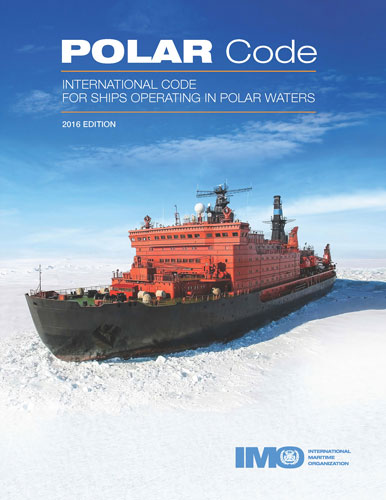International Code for Ships Operating in Polar Waters/–Ь–µ–ґ–і—Г–љ–∞—А–Њ–і–љ—Л–є –Ї–Њ–і–µ–Ї—Б –і–ї—П —Б—Г–і–Њ–≤, –њ–ї–∞–≤–∞—О—Й–Є—Е –≤ –њ–Њ–ї—П—А–љ—Л—Е –≤–Њ–і–∞—Е
-
 –†–µ–Ј–Њ–ї—О—Ж–Є—П –Р.805(19) –≠–Ї—Б–њ–ї—Г–∞—В–∞—Ж–Є–Њ–љ–љ—Л–µ —В—А–µ–±–Њ–≤–∞–љ–Є—П –Ї —Б–≤–Њ–±–Њ–і–љ–Њ –≤—Б–њ–ї—Л–≤–∞—О—Й–Є–Љ –£–Ъ–Т –∞–≤–∞—А–Є–є–љ—Л–Љ —А–∞–і–Є–Њ–±—Г—П–Љ-—Г–Ї–∞–Ј–∞—В–µ–ї—П–Љ –Љ–µ—Б—В–Њ–њ–Њ–ї–Њ–ґ–µ–љ–Є—П
–†–µ–Ј–Њ–ї—О—Ж–Є—П –Р.805(19) –≠–Ї—Б–њ–ї—Г–∞—В–∞—Ж–Є–Њ–љ–љ—Л–µ —В—А–µ–±–Њ–≤–∞–љ–Є—П –Ї —Б–≤–Њ–±–Њ–і–љ–Њ –≤—Б–њ–ї—Л–≤–∞—О—Й–Є–Љ –£–Ъ–Т –∞–≤–∞—А–Є–є–љ—Л–Љ —А–∞–і–Є–Њ–±—Г—П–Љ-—Г–Ї–∞–Ј–∞—В–µ–ї—П–Љ –Љ–µ—Б—В–Њ–њ–Њ–ї–Њ–ґ–µ–љ–Є—П
-
 –†–µ–Ј–Њ–ї—О—Ж–Є—П –Р.1067(28) –†–∞–Љ–Њ—З–љ—Л–µ –њ—А–Є–љ—Ж–Є–њ—Л –Є –њ—А–Њ—Ж–µ–і—Г—А—Л —Б–Є—Б—В–µ–Љ—Л –њ—А–Њ–≤–µ—А–Њ–Ї –≥–Њ—Б—Г–і–∞—А—Б—В–≤ - —З–ї–µ–љ–Њ–≤ –Ш–Ь–Ю
–†–µ–Ј–Њ–ї—О—Ж–Є—П –Р.1067(28) –†–∞–Љ–Њ—З–љ—Л–µ –њ—А–Є–љ—Ж–Є–њ—Л –Є –њ—А–Њ—Ж–µ–і—Г—А—Л —Б–Є—Б—В–µ–Љ—Л –њ—А–Њ–≤–µ—А–Њ–Ї –≥–Њ—Б—Г–і–∞—А—Б—В–≤ - —З–ї–µ–љ–Њ–≤ –Ш–Ь–Ю
-
 –С—О–ї–ї–µ—В–µ–љ—М вДЦ 36 –Є–Ј–Љ–µ–љ–µ–љ–Є–є –Є –і–Њ–њ–Њ–ї–љ–µ–љ–Є–є –Ї –Ъ–Њ–љ—Б–Њ–ї–Є–і–Є—А–Њ–≤–∞–љ–љ–Њ–Љ—Г —В–µ–Ї—Б—В—Г –Ь–Ъ –°–Ю–Ы–Р–° - 74
–С—О–ї–ї–µ—В–µ–љ—М вДЦ 36 –Є–Ј–Љ–µ–љ–µ–љ–Є–є –Є –і–Њ–њ–Њ–ї–љ–µ–љ–Є–є –Ї –Ъ–Њ–љ—Б–Њ–ї–Є–і–Є—А–Њ–≤–∞–љ–љ–Њ–Љ—Г —В–µ–Ї—Б—В—Г –Ь–Ъ –°–Ю–Ы–Р–° - 74
–Ш–Ј–і–∞–љ–Є–µ –љ–∞ –∞–љ–≥–ї–Є–є—Б–Ї–Њ–Љ —П–Ј—Л–Ї–µ
The Polar Code has been developed to supplement existing IMO instruments in order to provide a more comprehensive set of provisions to address the increased interests and traffic in the polar regions, and the unique operational environmental and search and rescue concerns peculiar to these areas, taking into account that the consequences of any major safety or pollution incident in polar waters are likely to cause widespread harm to these pristine environments.
Foreword
International Code for Ships Operating in Polar Waters (Polar Code) 1
Preamble
Resolution MSC.385(94)
International Code for Ships Operating in Polar Waters (Polar Code)
Resolution MEPC.264(68)
International Code for Ships Operating in Polar Waters (Polar Code)
Introduction
Part l-A Safety measures
Chapter 1 General
Chapter 2 Polar Water Operational Manual (PWOM)
Chapter 3 Ship structure
Chapter 4 Subdivision and stability
Chapter 5 Watertight and weathertight integrity
Chapter 6 Machinery installations
Chapter 7 Fire safety/protection
Chapter 8 Life-saving appliances and arrangements
Chapter 9 Safety of navigation
Chapter 10 Communication
Chapter 11 Voyage planning
Chapter 12 Manning and training
Part l-B Additional guidance regarding the provisions of the Introduction and Part l-A
Part Il-A Pollution prevention measures
Chapter 1 Prevention of pollution by oil
Chapter 2 Control of pollution by noxious liquid substances in bulk
Chapter 3 Prevention of pollution by harmful substances carried by sea in packaged form
Chapter 4 Prevention of pollution by sewage from ships
Chapter 5 Prevention of pollution by garbage from ships
Part ll-B Additional guidance regarding the provisions of the Introduction and Part ll-A
Appendix I
Form of Certificate for Ships operating in Polar waters
(Polar Ship Certificate)
Record of Equipment for the Polar Ship Certificate
Appendix II
Model table of contents for the Polar Water Operational
Manual (PWOM)




